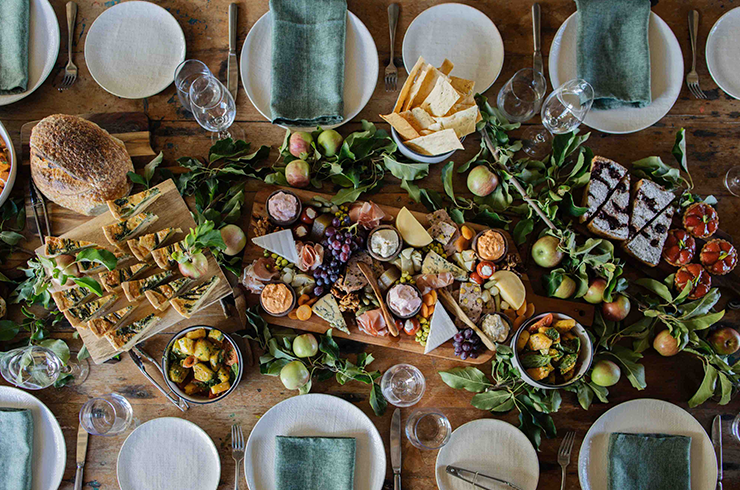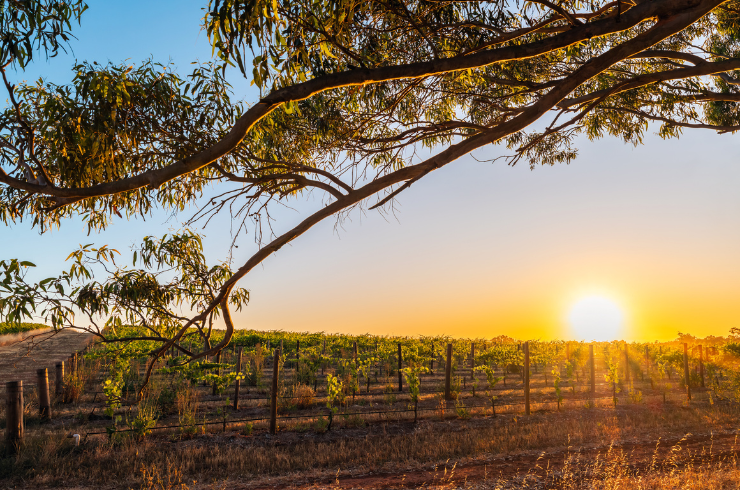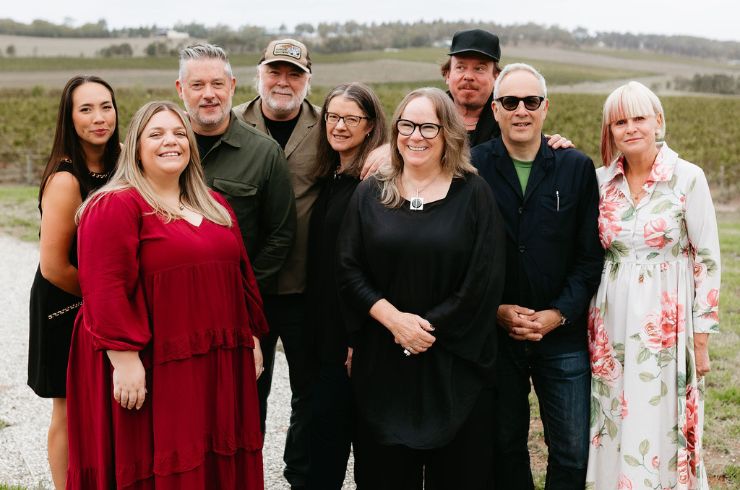Tyson Stelzer: 10 Great Cabernet
Of all the varieties that we lined up for the Wine Companion this year, cabernet sauvignon and its blends put forward more highlights than anything else besides the mighty shiraz itself. My top 10 are my personal list of favourites from the highlights put forward by the Tasting Team for our annual Awards judging, along with a few highlights from my recent tastings. Margaret River assumes a rightful lead, home to remarkably dignified wines of astonishing endurance, grossly undervalued and underrecognised globally. The Yarra ranks second, where cabernet and not pinot is the true star. There is good argument to suggest that the distinguished cabernet grape is more important than any other in the world – on ageability, collectability, global repute, even investability. It’s the wine I personally love to leave in my cellar the longest, and I’m still enjoying some of the first wines I purchased when I started collecting in the mid-1990s. Opening 20-year-old cabernet under screwcap is a real treat – its ability to age consistently and reliably under this closure is a game changer!
-
10 GREAT CABERNET selected by tyson STELZER
-
Wynns Coonawarra Estate
John Riddoch Limited Release Cabernet Sauvignon 2018
-
Xanadu Wines
Reserve Cabernet Sauvignon 2019
Margaret River -
Grosset
Gaia 2019
Clare Valley -
Howard Park
Abercrombie Cabernet Sauvignon 2018
-
Blue Pyrenees Estate
Richardson Reserve Cabernet Sauvignon 2018
Pyrenees -
Cullen Wines
Diana Madeline Wilyabrup 2018
-
Yarra Yering
Carrodus Cabernet Sauvignon 2020
Yarra Valley -
Bleasdale Vineyards
The Iron Duke Cabernet Sauvignon 2020
Langhorne Creek -
Brown Brothers
Patricia Cabernet Sauvignon 2017
King Valley -
Mount Mary
Quintet 2020
Yarra Valley
Jane Faulkner: 10 Great Cool-Climate Shiraz
When it comes to the popularity stakes, there’s no denying it. One grape variety dominates the Australian wine scene: shiraz. It is the most widely planted and our most important. While Penfolds Grange and Henschke Hill of Grace have garnered an international reputation and a level of prestige with pricing hovering around $900 on release, there are more affordable options. Plus, some of our most delicious wines are made in cooler climates. Take Canberra. Clonakilla has led the shiraz viognier style crafting such a distinct wine yet also produces an exceptional syrah that’s generally more savoury and medium-weighted. Many cool-climate producers opt for labelling it with the French name syrah to distinguish it from full-bodied, high-octane shiraz from warmer regions. Maybe it’s confusing, however, Australian syrah is here to stay. Another reason for the variety’s reputation, it’s excellent as a blender. It just seems to amalgamate well with a diverse range from tempranillo and sangiovese to pinot noir. On the latter, the famed Hunter Valley light red blend of pinot noir and shiraz made in-roads in the Yarra Valley a few years ago, thanks to Sarah Crowe at Yarra Yering, and has been taken up by others. The blend is now seeping across Mornington Peninsula, with Kooyong adopting it. In a way, our most popular variety is the most egalitarian, too. From inexpensive to high-end with everything in between, there is a shiraz for everyone.
-
10 GREAT COOLER-CLIMATE SHIRAZ selected by Jane faulkner
-
Nick O'Leary Wines
Heywood Red Blend 2021
Canberra District -
Clonakilla
T&L Vineyard Block Two Shiraz Viognier 2019
Canberra District -
Craiglee
Shiraz 2018
Sunbury -
Narkoojee
Valerie Gippsland Shiraz 2020
Gippsland -
Port Phillip Estate
Pinot Noir Shiraz 2021
Mornington Peninsula -
Yabby Lake Vineyard
Single Vineyard Syrah 2020
Mornington Peninsula -
Cobaw Ridge
Macedon Ranges Syrah 2019
Macedon Ranges -
Ravensworth
Estate Shiraz Viognier 2019
-
Mount Langi Ghiran
Langi Shiraz 2019
Grampians -
Best’s Wines
Thomson Family Shiraz 2020
Great Western
Dave Brookes: 10 Great Warm-Climate Shiraz
Shiraz, from our so-called ‘warm climate’ regions, has been responsible for a large proportion of Australia’s success on a global scale. It has enchanted overseas wine drinkers with its clean, fruit-forward lines during the heady ‘sunshine in a bottle’ years through the ’80s and ’90s and many other wine styles from across our land gained traction in global markets from riding on their coat-tails. But fashion is a fickle mistress and while the wine cognesenti may not fawn over these regional wine styles as they once did, wine consumers continue to merrily imbibe the wines of our warmer climate producers – and with good reason. Their wines have never been better and have never offered such regional and subregional diversity. From the savoury, medium-bodied beauties of the Hunter Valley to robustly proportioned multi-regional bombshells, warm climate shiraz still delivers its delicious goods. Your task, dear reader, should you accept it, is to peel off the layers of the regional and subregional onion skin. Today you’ll find shiraz with textures that range from light to powerful across all our warmer regions. Natty wines, whole-bunches, ‘nouveau/joven’ styles designed to take a chill and for ‘drinkin not thinkin’, and wines that drill down deeply into subregional nuance and sense of place. Diversity in shiraz is on point and that is a beautiful thing. Long live Aussie shiraz!
-
10 great warmer-climate shiraz selected by dave brookes
-
Penfolds
Grange Bin 95 2017
South Australia -
Henschke
Hill of Grace 2017
Eden Valley -
Brokenwood
Graveyard Vineyard Shiraz 2019
Hunter Valley -
Greenock Creek Wines
Fifteen Claims Shiraz 2019
Barossa Valley -
Mount Pleasant
1921 Vines Old Paddock Vineyard Shiraz 2018
Hunter Valley -
Jim Barry Wines
The Armagh Shiraz 2017
Clare Valley -
Clarendon Hills
Astralis 2018
McLaren Vale -
Torbreck Vintners
The Laird 2017
Barossa Valley -
Tyrrell’s Wines
Old Patch Shiraz 2019
Hunter Valley -
Chris Ringland
Hoffmann Vineyard Shiraz 2013
Barossa Valley
Jeni Port: 10 Great Durif
Often, one of the first wines you taste and connect with is the wine that stays with you, year in, year out. One of the first wine regions I ever visited was Rutherglen. One of the first wines I tasted there – after muscat – was durif. The red grape luxuriates in the warmth of North-East Victoria – with shiraz as a parent, it makes perfect sense – and I saw in its individuality and muscle, a wine that gave shiraz a run for its money. It can still do that, but it is such a small part of the durif story today. Look beyond the blatant powerhouse types – and many winemakers are – and you will find strength of character AND poise. Not to mention versatility with makers exploring, as they do with shiraz, everything with the grape from rosé to table wine through to fortifieds. The reset button on durif has been pressed. Expect fine, lifted aromatics on some; the presence of spice is definitely an added treat on many a durif, while on others there can be an inky, dense, black earth savouriness, too. Open your mind to durif – or petite sirah, as it is sometimes labelled – and a whole new world of wine awaits.
-
10 great durif selected by jeni port
-
All Saints Estate
Durif 2019
Rutherglen -
Scion
Fortrose Durif 2019
Rutherglen -
Billy Button Wines
The Dapper Durif 2019
Alpine Valleys -
ATR Wines
Hard Hill Road Petite Sirah 2020
Great Western -
Morris of Rutherglen
CHM Durif 2018
Rutherglen -
Domaine Asmara
Infinity Heathcote Durif 2020
Heathcote -
Cofield Wines
Quartz Vein Durif 2018
Rutherglen -
Mt Pilot Estate
Durif 2019
North East Victoria Zone -
Campbells
Limited Release Durif 2019
Rutherglen -
Eldorado Road
IV Nations Vintage Fortified 2015
Fortified
Philip Rich: 10 Great Pinot Noir
I’ve always said that Melbourne, surrounded by pinot noir regions – from the Mornington Peninsula to the Yarra Valley, Geelong, Gippsland and the Macedon Ranges and with Tassie just a short flight away – is the epicentre of this variety in the Southern Hemisphere. And being Melbourne born and bred, I can’t remember a time when I didn’t love pinot! Being thin skinned, pinot noir will never be as solidly coloured as cabernet or shiraz but I can’t think of another variety with pinot’s kaleidoscope of aromas; from lighter red fruits, such as strawberries and raspberries, through to darker ones like cherry and plum but also spice, floral notes and autumnal forest floor characters — or what the French call sous bois — that comes with age in great pinot. Throw in its propensity for producing wines that are structured but with finer, silkier tannins than most red varieties and you also have wines that can be enjoyed in their youth. Finally, show me another red variety that pairs so well with food — from tuna and salmon steaks grilled on the barbecue through to quail, duck and basically any game bird you care to mention!
-
10 great pinot noir selected by philip rich
-
Giant Steps
Applejack Vineyard Pinot Noir 2021
Yarra Valley -
Giant Steps
Primavera Vineyard Pinot Noir 2021
Yarra Valley -
Serrat
Pinot Noir 2021
Yarra Valley -
Seville Estate
Old Vine Reserve Pinot Noir 2021
Yarra Valley -
Oakridge
Vineyard Series Willowlake Pinot Noir 2020
Yarra Valley -
Coldstream Hills
Reserve Pinot Noir 2020
Yarra Valley -
De Bortoli
PHI Single Vineyard Yarra Valley Pinot Noir 2021
Yarra Valley -
Mayer
Dr Mayer Pinot Noir 2021
Yarra Valley -
Punch
Lance's Vineyard Close Planted Pinot Noir 2019
Yarra Valley -
Burton McMahon
Syme on Yarra Vineyard Pinot Noir 2021
Yarra Valley
Ned Goodwin MW: 10 Great Grenache
I recently read that grenache is likely the reparative bridge between disinterest in Australian wine abroad – particularly in the US – and the reality that there are exciting wines here. I agree. This is because grenache boasts a sense of terroir-inflected uniqueness. It is authentic, differentiating itself from those spiritual bastions of slabs of Spain and the Southern Rhône, by virtue of its pinot-esque grace, core of succulent red fruits and spindle of savoury, saltbush tannins. In an era when high quality chardonnay, shiraz, sauvignon and cabernet becomes almost interchangeable, domestic grenache is inimitable. It is sturdy and far from thirsty. It ripens late. Many of our vines are old and well established. Grenache is meant to be here. Still, too many wines smell like lolly water. Yields feel too high. Mid-palates are lacking and the oak regime, if applied, is too often all wrong. A surfeit of domestic grenache is treated like second-hand shiraz, rendered in small format, poor quality wood. But the best? Sandy soils, long and gentle agitations, wild ferments, some bunch here and maybe there and a joyous meld of eggs, amphorae and larger format oak and…wow! Grenache is the ace in a fraying pack.
-
10 great grenache selected by ned goodwin mw
-
Yangarra Estate Vineyard
Ovitelli Grenache 2020
McLaren Vale -
Aphelion Wine
Brini Single Vineyard Grenache 2021
McLaren Vale -
Samson Tall
Hatwell Vineyard McLaren Vale Grenache 2019
McLaren Vale -
SC Pannell
Old McDonald Grenache 2020
McLaren Vale -
Bondar Wines
Rayner Vineyard Grenache 2021
McLaren Vale -
Bekkers
Grenache 2020
McLaren Vale -
Paralian Wines
Marmont Vineyard Grenache 2021
McLaren Vale -
Ministry of Clouds
Grenache 2021
McLaren Vale -
Varney Wines
GSM 2019
McLaren Vale -
Thistledown Wines
Sands of Time Single Vineyard Blewitt Springs Grenache 2021
McLaren Vale
James Halliday: 10 Great Reds
I have never pretended that I have the Wisdom of Solomon, or anything close thereto. But the overnight disappearance of what was our largest market has inflicted pain on Australian winemakers large and small at prices far in excess of those offered by any other market. Time will cure the problems given the quality of Australian wines across all varieties and styles, and the resilience of those who live and work here. In the meantime you will see top quality wines at rock bottom prices exemplified by this selection. Thus I had a starting field of 570 wines with space for 10 so I had to be ruthless in the preliminary selection process. So I limited my selection of wines to those priced less than $100. Next, I had to arrange the wines by variety, and decided to limit this to mainstream: pinot noir, shiraz, grenache and cabernet sauvignon. I resolved there wouldn’t be a ‘Captain’s Pick’, and reluctantly decided I couldn’t make an exception for the 2017 Henschke Hill of Grace (99 points, $900). I bled for the wines cut out of the final selection as you see it.
Sign up to view these tasting notes and ratings
By becoming a member of Wine Companion, you'll have access to the largest database of wines in Australia.
This article first appeared in issue #65 of Halliday magazine. To receive all six issues per year plus the digital version, subscribe to become a member.
Latest Articles
-
Win
Win a stunning collection of Plumm glassware and wine, valued at over $500
2 days ago -
Wine Lists
Top Christmas wines under $30 (and five worth splurging on)
2 days ago -
Wine Lists
Why you should drink Australian this festive season (and 80 of our best wines to try)
2 days ago -
From the tasting team
The Aussie wines the Halliday Tasting Team will be opening this festive season
2 days ago



























































